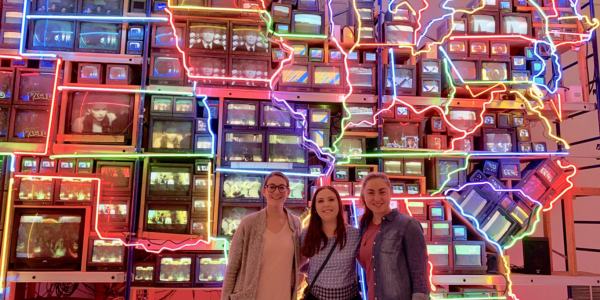In Early December 2019, Professor Wallace accompanied five graduate students to Washington DC (Julie James, Stephanie Dolezal, Emily Thompson, Hua Zhao, and Hannah Wier) with the primary goal to see the exceptional exhibitions of Andrea del Verrocchio and Alonso Berruguete at the National Gallery of Art.
Each of the three Early Modern students selected, researched, and gave ten-minute gallery presentations on works chosen from the two Renaissance exhibitions. The two non-Renaissance students presented a work from the National Gallery of Art permanent collection: Hua Zhao unveiled for us a folding screen by Edouard Vuillard and Hannah Wier discussed a group of early and later paintings by Camille Pissarro. As we moved back and forth from Renaissance Florence to 19th century Paris, we experienced a marvelous frisson between a distant, older art and the brilliantly colored, seemingly more accessible world of 19th and early 20th century Paris.
In addition, our group met with Dr. Alison Luchs, the curator of sculpture at the National Gallery, who discussed a number of curatorial problems – such as dating, attribution, style, and conservation issues – in the Italian Renaissance sculpture galleries. Dr. Eric Denker, Senior Lecturer, offered an introduction to the history of the National Gallery’s five founding collections and some of the challenges faced by curators today when thinking of collecting for a museum or mounting an exhibition. Dr. Denker then invited the students to his home where he shared a portion of his private collection of prints, drawings and plates from James McNeil Whistler and his extensive circle of followers and imitators.
While the students were given “assignments,” which proved immensely engaging (including to many “hangers-on” who found the student presentations compelling), they also had ample free time to wander the National Gallery of Art, other exhibitions (such as an exceptional history of pastels), and to visit other Washington DC museums, such as National Portrait Gallery/Smithsonian American Art Museum, and the Freer-Sackler Galleries.
As one student wrote: “I am grateful for the chance to see these exhibitions, and to spend time with my colleagues in discussion about the works.” What could be better?










